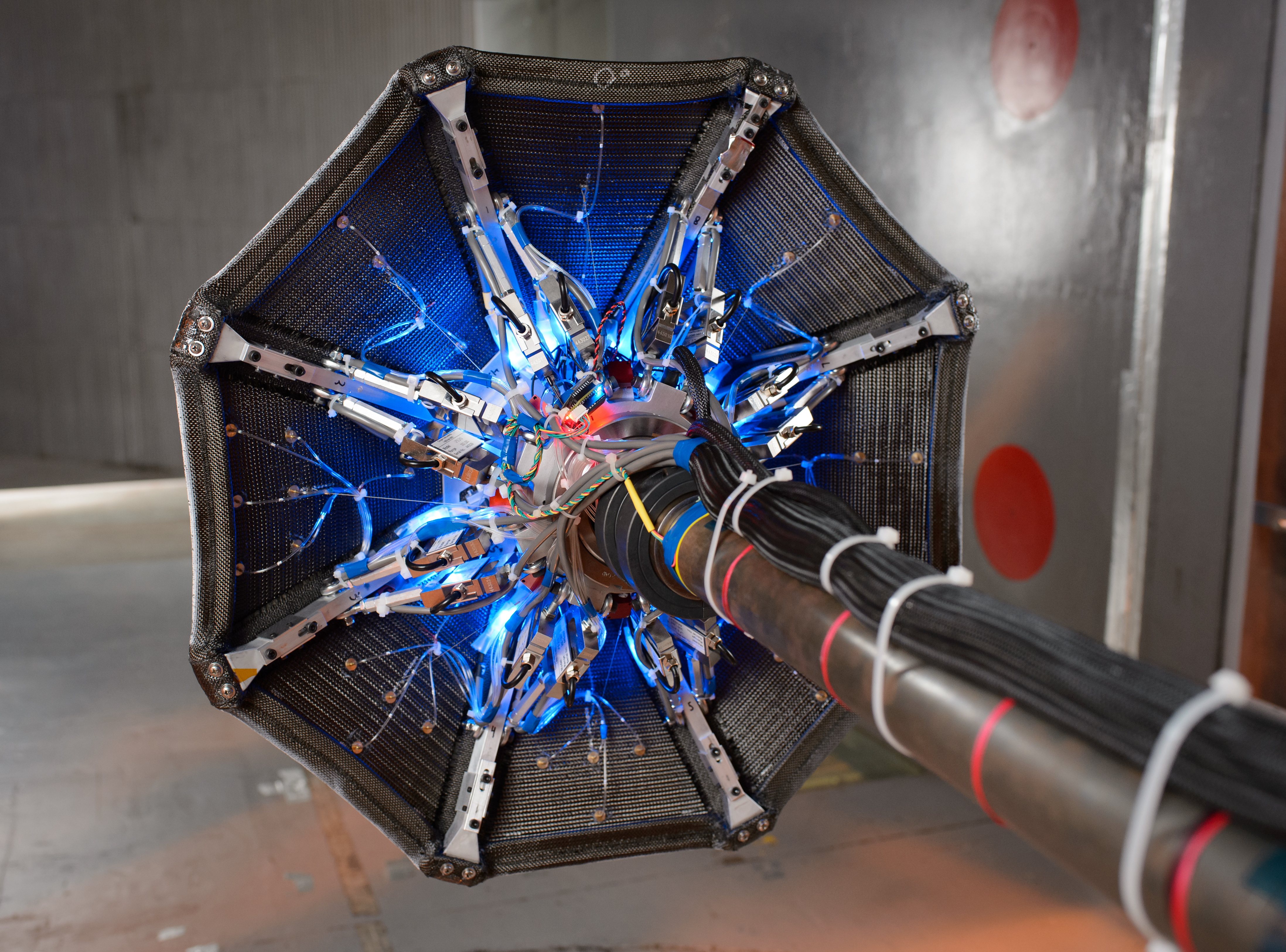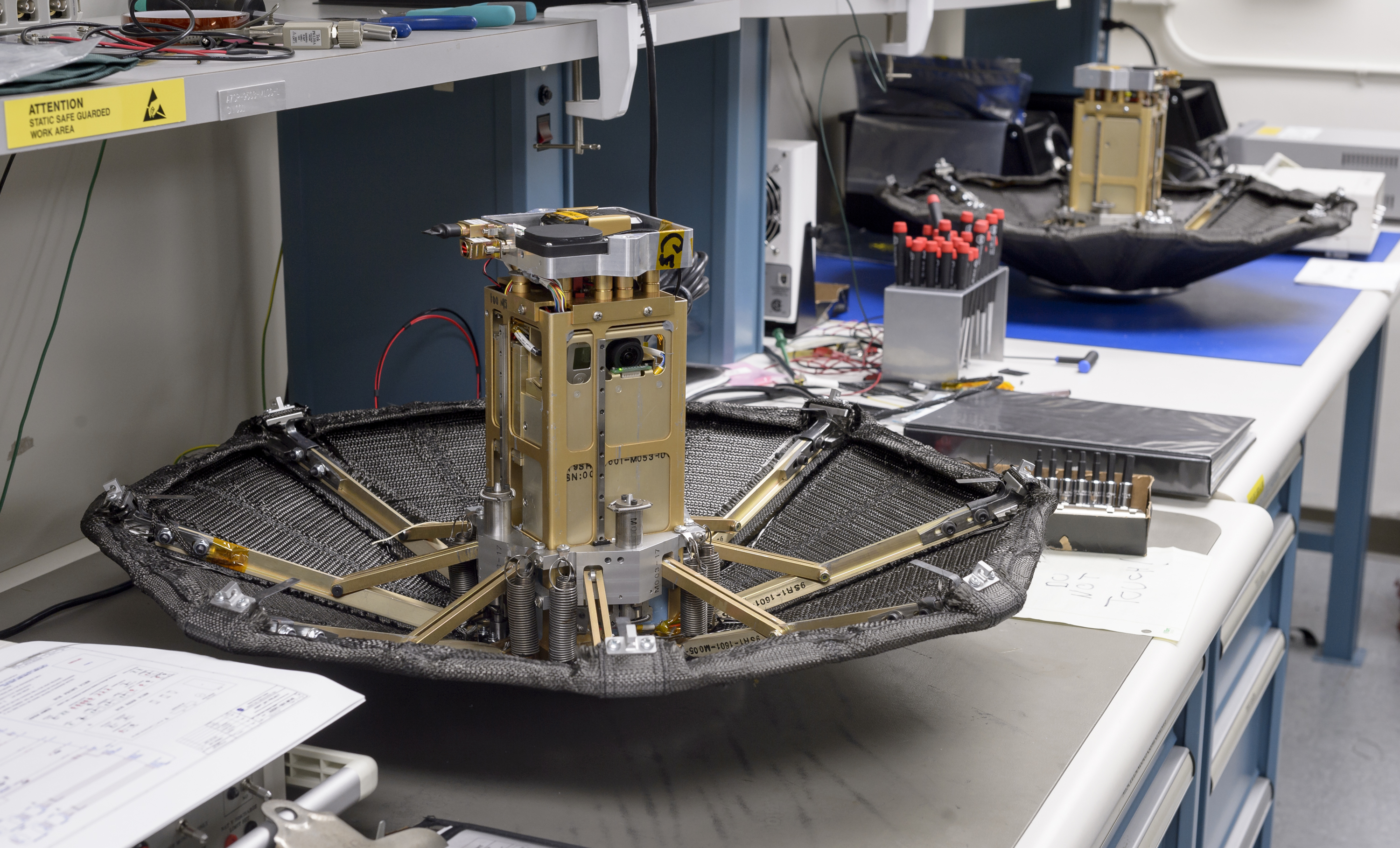Interplanetary Umbrella: New Heat Shield Could Land Bigger Payloads on Planets

Forget packing a towel to explore the universe, as the joke from "The Hitchhiker's Guide to the Galaxy" goes. Instead, a new planetary landing technology is more like packing an umbrella.
The NASA mission is called Adaptable Deployable Entry Placement Technology (ADEPT). The device is completely foldable, and once unveiled, it forms a rigid heat shield called an aeroshell. NASA plans to use this technology for landing larger payloads on Mars or other locations, without the need for larger rockets — and their associated cost, expense and complication.
"This game-changing technology could squeeze a heat shield into a rocket with [the shield having] a diameter larger than the rocket itself. The design may someday deliver much larger payloads to planetary surfaces than is currently possible," NASA officials said in a statement.
ADEPT performed its first flight test yesterday (Sept. 12), launching from Spaceport America in New Mexico on an UP Aerospace suborbital SpaceLoft rocket. While the test results are still being analyzed, ADEPT was expected to unfold 60 miles (nearly 100 kilometers) above Earth in order to test the device's deployment and aerodynamic stability. It would deploy at 2,300 mph (3,700 km/h), or roughly three times the speed of sound at sea level.
"For a deployable like ADEPT, you can do ground-based testing, but ultimately, a flight test demonstrates end-to-end functionality — surviving launch environments; deploying in zero gravity and the vacuum of space; holding that rigid shape and then entering, in our case, Earth's atmosphere," Paul Wercinski, ADEPT project manager at NASA's Ames Research Center in California, said in the statement.

The aeroshell includes a carbon-fabric skin that is pulled over deployable struts and ribs. This fabric also happens to be the primary part that protects spacecraft during entry, descent and landing.
Ultimately, NASA plans to do a test for an Earth entry at a higher speed, of 17,000 mph (27 km/h), to prepare the technology for missions in the far future. Those could include trips to Venus, Mars or Saturn's moon Titan (which has a thick atmosphere, like Earth). ADEPT could also be used to send lunar samples back to Earth.
Get the Space.com Newsletter
Breaking space news, the latest updates on rocket launches, skywatching events and more!
You can see more information about ADEPT at this website: https://gameon.nasa.gov/adept-sr-1/
Follow us @Spacedotcom, Facebook and Google+. Original article on Space.com.
Join our Space Forums to keep talking space on the latest missions, night sky and more! And if you have a news tip, correction or comment, let us know at: community@space.com.

Elizabeth Howell (she/her), Ph.D., was a staff writer in the spaceflight channel between 2022 and 2024 specializing in Canadian space news. She was contributing writer for Space.com for 10 years from 2012 to 2024. Elizabeth's reporting includes multiple exclusives with the White House, leading world coverage about a lost-and-found space tomato on the International Space Station, witnessing five human spaceflight launches on two continents, flying parabolic, working inside a spacesuit, and participating in a simulated Mars mission. Her latest book, "Why Am I Taller?" (ECW Press, 2022) is co-written with astronaut Dave Williams.









